by Ken Lain, the mountain gardener
These hot days of Summer, which officially starts this week, may be tempting us to sit back and simply enjoy what we planted in Spring. But this is the time when we must turn our attention to the real aspects of gardening: tending to plants and reaping the rewards. This week, to the delight of our summer palates, the first squashes were picked and grilled! Glumly, we are entering our gardens’ peak pest and problem season. That means it is time to restart and refuel our gardening “engines” with these simple summer tasks that every gardener should focus on within the next 30 days
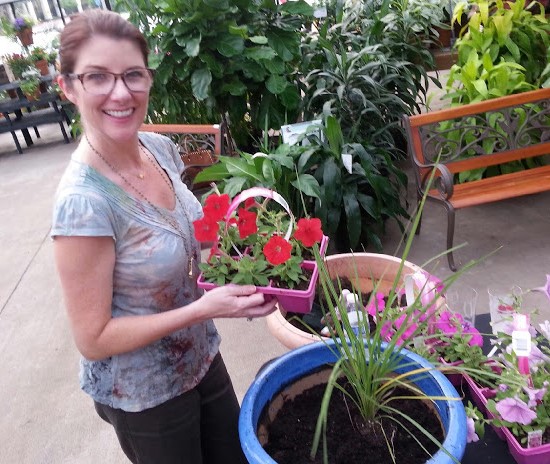
30 gardening tips that keep a summer garden growing:
Stay cool – Work outside when it’s less hot and humid: in the early morning, late afternoon, and evening.
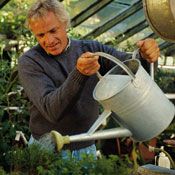
Hand water – Give a helping hand to new trees and shrubs planted this spring. In addition to drip irrigation that services most trees and shrubs, new plants appreciate supplemental hand watering once a week until the monsoons arrive in July.
Mulch – Check mulch layers and reapply over bare spots before those areas are homesteaded by new weeds.
Check leaves – A plant’s leaf damage is a good indicator of nutrient deficiency. These issues only become worse as summer heat progresses
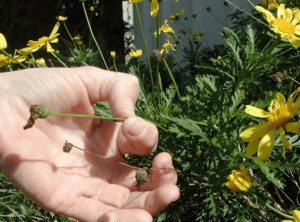
Pinch and deadhead – This is a must-do task if flowers are to be kept blooming all season long.
Cut back – Tall perennial bloomers like asters, monarda, Helianthus, and mums should be cut back now so they won’t bloom too early. Pruning guarantees that they will grow fuller and more densely covered with Fall-anticipating buds.
Remove – Pull out cool-season crops like spinach that will bolt into flower because of the heat.
Plant – Fill in empty spaces with succession plantings of summer greens like kale, chard, and lettuce. Also, plant vegetables that like being planted during hot weather: tomatoes, peppers, and eggplants.
Bush beans – After harvesting, plant new succession crops at two-week intervals.
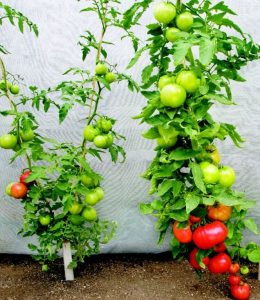
Tomato plants – Stake them as they grow. Pinch out suckers.
Asparagus and Rhubarb – These two plants should not be harvested in summer. Let them build up their reserves for next season.
Corn – To prevent earworms, put a couple of drops of mineral oil on corn silks within a week after they appear.
Berries – Protect fruits with nets, row covers, or scare tape.
Harvest – Vegetables, like squash, beans, and tomatoes, should be checked daily.
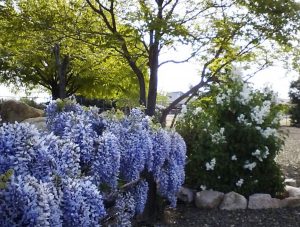
Wisteria – Once they finish blooming, prune the vines to keep them a manageable size.
Evergreens – Pine, spruce, and cedar should be pruned back as soon as new growth starts to turn a dark green or blue.
Compost – That simmering pile of future plant nutrients should be turned to take advantage of the summer heat.
June Fruit Drop – This is standard on fruit trees. It thins fruit to manageable crop size. Clean up any fallen fruit.
Insects love summer – Be vigilant! Walk through gardens checking both sides of leaves for eggs and nymphs. Check trees for nests of bagworms.
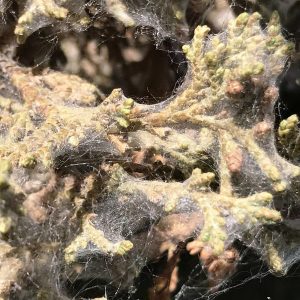
Spider mites – Look for plants with spider webs with no visible spiders, especially evergreens like spruces and junipers—YouTube on how to Control Spider Mites.
Lawns – Allow lawns to grow taller. Set the mower blade higher, so the grass has a chance to shade the soil, helping it to stay cooler.
Water – Make sure plants stay hydrated. Look for leaves that are wilting, or that show their undersides in the heat of the day. Water by hand, if needed, or bump up your irrigation times to water longer for each cycle. Watters water guide.
Feed – The entire landscape should be fed before summer rains arrive. Within the next 30 days, feed plants with my ‘All Purpose Plant Food’ 7-4-4.
Houseplants – Move ‘em out of doors. After many months of breathing indoor air, when moved outside it’s like their summer vacation!

Birds – In a birdbath or shallow dishes placed around the garden, provide the freshwater essential to birds’ survival.
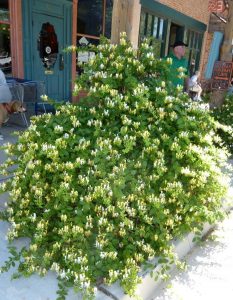
Plant of the Week: Hall’s Japanese Honeysuckle– With fragrant yellow flowers that love blooming in the summer heat, this outstanding mountain vine is untroubled by wind, drought, deer, and javelina. Ideal at growing up fences, walls, or as a ground cover, it also is an excellent choice for a fast-growing screen, even in the poorest soil. Summer is the preferred planting time for this heat lover.
Summer Gardening Classes – Classes will be held outdoors here at Watters Garden Center every Saturday from 9:30 to 10:30 am., with lots of plants to maintain social distancing between our students! We upgraded our P.A. system; it now makes a direct link to our live Facebook stream of the classes. Here is the summer lineup:
June 20 – Perennial Plants that Thrive in Summer Heat
June 27 – Best Mountain Fruit Trees; How to Plant in Summer
July 11 – Plant Better Berries and Grapes
July 18 – Avoid these Common Pests at All Costs
Until the next issue, I’ll be here at Watters Garden Center helping local gardeners plant and care for their summer gardens.
Ken Lain can be found throughout the week at Watters Garden Center, 1815 W. Iron Springs Rd in Prescott, or contacted through his web site at WattersGardenCenter.com or FB.com/WattersGardenCenter .

